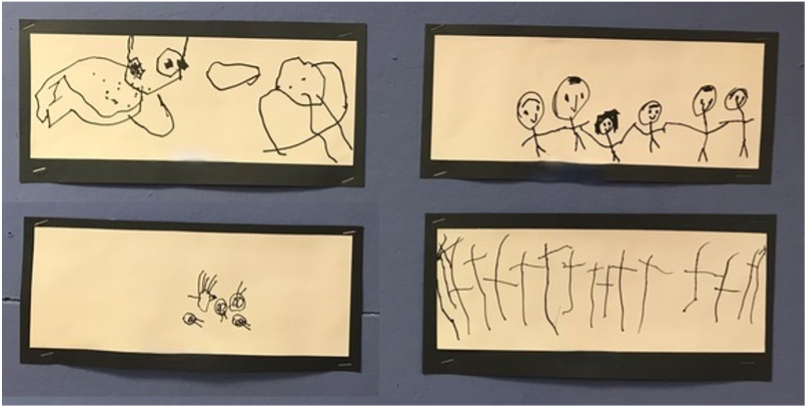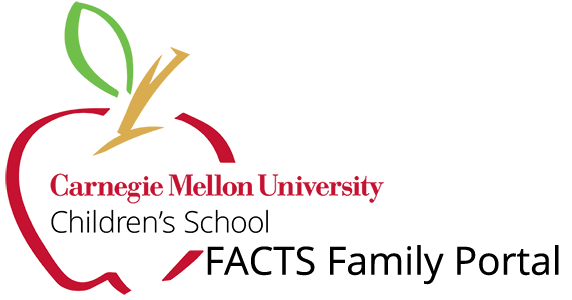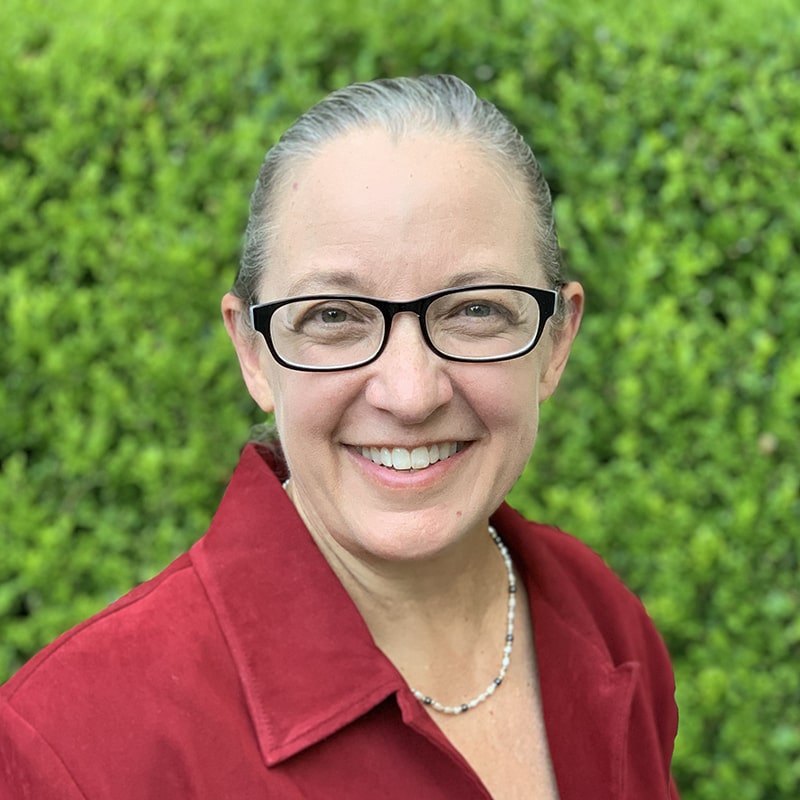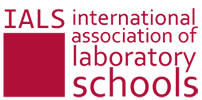October 2021: Patience & Priorities
Nearly two years into the Coronavirus Pandemic, we have cautiously returned to full-capacity, in-person children’s programming at the Children’s School, while continually monitoring changing community conditions and negotiating ways to improve our risk mitigation strategies. Both adults and children returning to school this fall have had diverse pandemic experiences, ranging from minimal to traumatic impact, so our approaches to participating in the learning community differ widely. In response, we aim to practice patience with ourselves and others as we settle into the school routine at different paces. We also focus first on our highest priorities as we carefully weigh risks and benefits when planning each aspect of our program.
Both patience and priorities resonate well with the Children’s School philosophy and practice. As a laboratory school founded on the principles of developmental psychology, we aim to support children’s growth while their development naturally unfolds, knowing that each child’s trajectory will be unique. We get to know each individual child by patiently tracking and purposefully scaffolding their growth, as well as celebrating their progress and sharing it with families.
Our accrediting agency, the National Association for the Education of Young Children (NAEYC), has recently updated their definition of Developmentally Appropriate Practice based on current research in child development. You can download the full position statement in English or Spanish. Reviewing it will help everyone in our learning community more clearly understand the intentional design of our laboratory school as we progress through the NAEYC Accreditation Renewal process this year. The brief quotation presented here highlights the gentle acceptance of varied paths of “optimal development and learning”, which is especially needed in the midst of a pandemic.
“NAEYC defines ‘developmentally appropriate practice’ as methods that promote each child’s optimal development and learning through a strengths-based, play-based approach to joyful, engaged learning. Educators implement developmentally appropriate practice by recognizing the multiple assets all young children bring to the early learning program as unique individuals and as members of families and communities… Developmentally appropriate practice recognizes and supports each individual as a valued member of the learning community. As a result, to be developmentally appropriate, practices must also be culturally, linguistically, and ability appropriate for each child.”
According to NAEYC, “educators design and implement learning environments to help all children achieve their full potential across all domains of development.” At the Children’s School, we focus on the following 6 domains, listed in order of priority:
 Self-Esteem & Independence
Self-Esteem & Independence- Interaction & Cooperation
- Communication
- Discovery & Exploration
- Physical Capabilities / Health & Safety
- Artistic Expression and Appreciation
In most years, the majority of our incoming Preschool 3’s are experiencing school for the first time, and all of our classes prioritize the first two domains in September. This year, however, only half of our Preschool 4’s and Kindergartners had in-person school experiences last year, so we have needed to slow our pace to patiently integrate everyone effectively into the school community. This patient focus on our highest priorities will yield a firm foundation for everyone’s progress in the other developmental domains. As these family drawings by Preschool 3’s clearly demonstrate, the developmental spectrum is broad. We are excited by the opportunities for growth ahead!
November 2021: Relationships Matter
Striving for high quality early education while mitigating COVID-19 risk by covering our faces and physically distancing ourselves highlights the importance of NAEYC’s accreditation standards that identify relationships as a foundation for quality early care and education. Standard #1 is actually called “Relationships” and includes criteria about promoting positive relationships between educators and families, between educators and children, and between children and peers. Standard #7 is called “Families”, but the emphasis of all the related criteria is on establishing and maintaining collaborative relationships with the diverse families we serve so that together we can support each individual child’s development. Because our laboratory school is thoroughly integrated into the university community, we cultivate an even broader view of relationships that includes all the learners involved in our educational system.
- We begin with the belief that all our interactions and communication should focus on building a consistently warm, respectful, and positive emotional climate for our entire school community, so we aim to set that tone in our routines and conversations from greeting through dismissal, with children, families, undergraduates, and facilities workers, within the school and elsewhere on campus. Celebrating Campus Children’s Centers week helped the children see this connection.
- From our web site design and our initial application questions to our newsletters and emails with enrolled families, we attempt to clearly communicate a broad welcome to diverse families and children and a deep interest in getting to know and understand the family structure, cultural background, child-rearing practices, etc. so that we can foster strong reciprocal relationships.
- With families, we emphasize close home – school connections through a variety of communication mechanisms so that we can support each child’s growth in the self-regulation and social skills that will help with functioning comfortably and building friendships in a classroom community that feels secure and is responsive to everyone’s needs.
- Though the pandemic precludes our typical “open door” policy, large events, and most in-person interaction, educators and administrators aim to connect with families virtually through the classroom blogs, whole school newsletter, virtual visits, et cetera. Based on a recent survey of families with older 4’s and kindergartners, we are offering a Zoom school choice discussion in mid-November.
- For all families, we discuss their children’s development in detail and provide resources for community involvement and school transitions. When needed, we can arrange for language translation and help families connect with services related to unique challenges regarding physical and mental health, individual learning support or counseling, etc.
- When conflicts arise, we seek to utilize direct, honest, and sensitive communication to help us develop an effective solution. We listen carefully and reflect frequently so that we can discern assumptions that may be biasing our perspectives and work toward solutions that counter discrimination and collaboratively address persistent challenges. For example, feedback from families early in the year helped us develop a new handwashing routine for children who eat their snack on the playground, and input from families is continuing to shape our new policies for return to school after illness, close contact, or travel.
In all these ways, we seek to develop close partnerships with children and families to create the best learning opportunities for everyone in our busy laboratory school while prioritizing physical and mental health during the ongoing pandemic. We invite your input and involvement as together we strive for excellence.
December 2021: Teachers are the Key
Reviewing the daily classroom blog, viewing classroom photos on the classroom web sites, and participating in Parent/Teacher conferences all give parents an opportunity to witness the central role of teachers in their children’s education. NAEYC recognizes the importance of high-quality teaching by dedicating two standards in the national accreditation system to teaching practices and teacher professional development. Standard #3 (Teaching) focuses on using effective developmentally, culturally, and linguistically appropriate teaching approaches. Standard #6 (Teachers) ensures that accredited programs build a teaching team that has the educational qualifications, knowledge, and professional commitment necessary to promote children's learning and development and to support families' diverse needs and interests. We are fortunate to be embedded in a university culture that continually strives for best practices in all aspects of the education process and also provides the human resources support for all campus employees. This context enhances our laboratory school’s ability to both lead and innovate in the realm of early childhood teaching, especially while the pandemic continues to impact our practices.
- Naturally, we begin with recruitment and retention of effective educators who share our passion for building a caring learning community that is responsive to children’s and adults’ interests and needs, designing a rich learning environment, and promoting meaningful learning that helps everyone deepen their conceptual understanding of relevant topics and strengthen skills in all domains.
- The CMU human resources system helps us search broadly for educators with relevant college degrees and experience, provides excellent benefits and continuing education resources, and offers coaching for our administrators so that we can best integrate our staff as a team and support each individual’s unique personal and professional growth.
- We have the freedom to plan our school calendar and schedules such that we can both fulfill our laboratory school responsibilities and design the best professional development for our staff. Both TIME and RESOURCES are essential. Having nearly two weeks at the beginning and end of each school year to focus on professional growth, plus weekly team planning and staff development time enables us to meet and exceed the accreditation requirements. We can provide the fundamentals for staff orientation, health and safety training, and seminars in ethics, child development, assessment, special needs, etc. In addition, we can effectively utilize opportunities to learn via active involvement in collaborative advancement projects. Though keeping up with changing guidance related to Covid-19 risk mitigation has taken much of our time and attention since the spring of 2020, our team chose issues of diversity and inclusion, as well as broadening our community engagement, as areas of collaborative emphasis this year so we have begun a series of heritage month recognitions and experimented with discussing difficult topics like food insecurity with our children.
- Our schedule and excellent staff/child ratio also afford opportunities for individuals, teams, and the whole staff to reflectively focus on continual quality improvement. We are privileged to share our educators as leaders in the field, serving on local and national boards, mentoring undergraduates, collaborating on research projects, speaking and writing for national audiences, etc. Of course, everything has shifted to virtual formats during the pandemic, but we hope to have an in-person lab school conference in 2022. By engaging in the field as leaders beyond our campus, we invest in the quality of our educators and strengthen the whole team’s ability to foster the best possible learning experiences for everyone involved in our laboratory school.
January 2022: Health & Safety
Since 2020, the importance of the Children’s School learning environment has been highlighted as a crucial context for the effective relationships and teaching in early education that I described in the fall. Pre-pandemic, when classes were in session, much of the proactive preparation and intentional design of the environment was invisible, but pandemic times required rethinking everything.
We start with the NAEYC standards for Health (#5) and Physical Environment (#9), which include quality specifications for promoting the nutrition and health of children, protecting children and staff from injury and illness, and providing a safe and healthy physical environment. The standards advocate designing welcoming, accessible, and developmentally appropriate indoor and outdoor environments, with sufficient space for the number of children (35 sq. ft. indoors, 75 sq. ft. outdoors), safe and well-maintained equipment, materials, and furnishings, adequate supervision by sight and sound, clear, ADA accessible pathways, and secure boundaries, with access to safe drinking water and adequate toileting facilities and protection from environmental hazards ranging from extreme temperature and harmful sun exposure, to insects, smoke, pollution, asbestos, lead, etc. NAEYC also advocates designing environments for children and adults that are aesthetically pleasing, comfortable, naturally lighted, and well-ventilated, with spaces designated for individual belongings and clearly arranged for individual, small group, and whole group interactions.
In pandemic times, we must go beyond the standards because “best practices” are constantly evolving to reflect the science related to COVID-19 and its variants. On our Administrative Team, Miss Hancock leads our health and safety efforts, and she serves as the primary liaison with government agencies, consultants (medical, nutrition, playground), trainers, and university personnel as everyone processes the changing guidance and applies it to our unique situation. Children’s School educators, parents and researchers had to reconsider space and ventilation, and our annual trainings shifted focus to the importance of facial coverings, hand washing, and enhanced cleaning protocols based on the most current COVID-19 recommendations. Our goal was to create a “yes” environment with clear and consistent routines that would promote health and safety while encouraging children’s social interactions that are so important in early childhood.
While our teaching teams prioritize the daily classroom procedures for health and safety, they are also responsible for designing the classroom environment with varied materials that are organized for children’s independent use, created and rotated to align with our thematic studies, and adapted to the children’s interests and developmental levels.
As part of the Carnegie Mellon community, we have always benefited greatly from the campus security, building maintenance, cleaning, grounds-keeping, routine safety checks, insurance, hazard responses (e.g., pest management, air quality monitoring), facilities project management, etc. Beginning a new calendar year with the Omicron variant outpacing Delta, we are especially grateful to CMU’s COVID-19 response team for their diligence in creating community standards to maximize everyone’s health and safety. As CMU Tartans, we commit to being All In, Everywhere. Please join us in following all of the latest guidance, particularly with respect to securing booster shots for all eligible individuals and getting everyone tested after travel. These measures reduce the risk of bringing COVID-19 into our community and limit its spread so that together we can keep everyone safe. Best wishes for a new year of health and wholeness.
February 2022: Curriculum
NAEYC’s standard for Curriculum provides a broad overview listing the essential components of a quality early childhood program. The standard does NOT require centers to adopt a packaged curriculum, nor does it recommend one specific educational approach, so centers are free to design their programs based on diverse philosophies, as long as their purposeful design fits the NAEYC criteria. This balance of a structured curriculum framework with the flexibility for intellectual freedom fits well with Carnegie Mellon’s unifying motto of “My heart is in the work” and sets the stage for a laboratory school community in which all learners can engage in and contribute to meaningful learning.
- Our curriculum framework is based on six sets of learning objectives that cover the full range of development and are based on early childhood development theories. You can download these objectives for Self-Esteem & Independence, Interaction & Cooperation, Communication, Discovery & Exploration, Physical Capabilities, Health & Safety, and Artistic Expression & Appreciation from our web site in the “Program” section under “Six Basic Learning Goals”.
- Every aspect of our program is intentionally designed to foster children’s development relative to our listed objectives, including our classroom arrangement, choice of materials, schedules and routines, teaching strategies, etc. In addition, our choice of interdisciplinary thematic curriculum allows us to facilitate broad skill building across all domains while also promoting deep exploration of relevant, real-world topics, such as our upcoming whole school study of Rainforest or other recent whole school units on Planet Earth, Healthy Mind & Body, or Theatre Arts. We choose topics to both deepen conceptual development of the specific topic and to broaden children’s exposure to the world (e.g., studying Celebrations Around the World in the Preschool 3’s or the Seven Natural Wonders of the World in the Kindergarten).
- Using the framework of developmental objectives in the context of thematic studies makes our curriculum adaptable to a range of children’s ability levels and responsive to diverse child and family experiences, interests, and values. Choosing the themes for the year in advance allows educators to locate quality resources and proactively plan to incorporate the wealth of campus and community assets into the unit, while leaving significant openness in the unit design to integrate children’s ideas and emerging interests as the unit progresses. When planning the specific activities within a unit, we balance both the grouping of children – including individual, small group and large group activities – and the style of guidance – including child-guided play, inquiry, and creative expression, as well as teacher-guided lessons and activities.
- In all these ways, we are laying essential cognitive foundations for the literacy, math, science, social studies, and arts that will be more formally taught in elementary school and beyond. We directly teach and then repeatedly practice the use of essential tools for learning, beginning with basic gross and fine motor skills and cognitive methods for problem solving and inquiry and then gradually introducing physical tools and technologies (e.g., simple machines, cooking utensils, woodworking tools, digital media, etc.), all with proactive attention to appropriate health and safety issues. In non-pandemic times, being affiliated with Carnegie Mellon and active in the Pittsburgh early education community provides our educators with a rich network of experts willing to support our children’s learning by contributing their time and resources to our thematic studies, all with the goal of designing the most authentic experiences possible for young children in innovative ways that we can share with other educators as part of our laboratory school outreach.
March 2022: Assessment
The NAEYC standard for Assessment advocates ongoing authentic observations and evaluations of a child's learning and development, as well as communicating the child's progress to the family. As with the curriculum standard, there is no requirement that we utilize a particular type of assessment or standardized test, so we are free to design a system that fits our developmental goals and our thematic approach to curriculum. We ARE required to demonstrate, through our overall program portfolio and our individual classroom portfolios, that our assessment system is an organized and integral part of our program and document that it meets the accepted reliability and validity criteria for early childhood assessments.
- Interestingly, assessment is the one standard in the whole NAEYC system for which our affiliation with Carnegie Mellon University has little direct benefit. In fact, NONE of the data collected by researchers conducting studies in our laboratory school can be shared with school personnel in a way that would identify individual children, both for confidentiality reasons and because many of the measures used in the studies are only in the development stage and might, therefore, not be valid or reliable assessments.
- The Children’s School focuses assessment on describing the developmental progress of individual children so that we can best adapt our program to capitalize on the strengths and interests of our unique groups each year and help our wide range of children progress. Occasionally, we identify areas of weakness that might require referrals for diagnostic testing to determine whether the child would benefit from therapeutic intervention. Most often, such intervention would involve speech / language therapy, occupational therapy, etc., that is either done in the context of school or on an outpatient basis elsewhere.
- To gather our assessment data, we utilize a variety of natural classroom activities that are both interesting and familiar to the children, often in the context of a routine or game. For example, observations of children sharing at circle time provides teachers with information about their verbal communication skills, their ability to interact with peers who ask questions or offer ideas, etc. During a game of bingo in which one child is the “caller” during each round, the teacher can assess the caller’s comfort in a leadership role, knowledge of the numbers or letters on the cards, and ability to coach other children who may not see the called item on their cards. To assess many gross motor skills at one time, a teacher might arrange an obstacle course that involves climbing up and down steps, crawling through a tunnel, hopping from one hoop to another, walking across a balance beam, and so on. Because the tasks are familiar and easily adaptable, they can be used effectively with children who are dual language learners, as well as those who have special needs.
- We discuss assessment information with families most formally during parent / teacher conferences when we review each developmental domain and describe our observations, along with sharing photos and children’s creations. We always informally welcome parent input regarding their view of the child’s strengths and weaknesses, but we formalized that process ten years ago by using the Ages & Stages questionnaires. With this more reciprocal approach to evaluating children’s progress, we are better able to partner in planning next steps for home and school emphasis designed to challenge the strong areas and alleviate the difficulties.
- Overall, our approach to assessment resonates well with Carnegie Mellon’s emphasis on continuous quality improvement in the context of commitment to collaborative and reflective efforts that result in teaching and learning excellence.
April 2022: Community Relations
As we draw near to the end of our NAEYC Accreditation series, I reflect on the Children’s School’s approach to quality standard #8: Community Relationships, and the many reciprocal benefits of our integration into the Carnegie Mellon learning community. NAEYC’s standard for Community Relationships includes three levels of relationships: 1) raising awareness and accessing community resources available to educators and families for promoting young children’s health and well-being, 2) enriching the curriculum by accessing cultural and arts resources with the children during school and encouraging families to access them within the community, and 3) “acting as a citizen in the neighborhood and the early childhood community” to contribute our resources - including expertise – to local, state, and national early childhood enhancement and advocacy efforts, particularly for quality professional development.
- We work closely with Carnegie Mellon’s Police and Environmental Health & Safety departments regarding security and fire safety issues, and we partner with the university nutritionist regarding food handling and the health center for training to administer medication to children, as well as for the educators’ annual flu shots and now COVID-19 vaccination and Tartan Testing.
- For families, our administrative team recommends community resources related to health and well-being, school choices and transitions, scholarship funding, developmental diagnostics and therapy, and dealing with family challenges, grief, etc.
- The Carnegie Mellon campus and Schenley Park provide numerous opportunities for enhancing our program via walking field trips, access to musicians and artists (such as our Artist in Residence, Isla Hansen), and opportunities for inspiration by interaction with undergraduates who have diverse majors, interests, and talents.
- In addition to sharing information about university events intended for families (such as the upcoming carnival), we also utilize our whole school newsletter, classroom blog, and email distribution list to notify our families of enrichment opportunities (such as the recent advertisement for swimming lessons and the monthly online heritage exploration resources).
- Our citizenship efforts are among the strongest aspects of the Children’s School. In addition to our reciprocal relationships with the Psychology Department faculty and researchers, we have educators in leadership roles in the Pittsburgh Alliance of University Schools (PAUS), the National Coalition for Campus Children’s Centers (N4C) and the International Association of Laboratory Schools (IALS). Mrs. Rosenblum just attended the virtual N4C annual conference, Dr. Carver is on the leadership team for the IALS Research Collaborative, and Mrs. Bird serves on the IALS Board and will be attending the annual conference in person next week.
- Because CMU provides so many infrastructure resources for our school, we have a generous professional development budget and enough educators so that there is coverage for those participating in conferences, collaborative projects, etc. The Psychology Department also supports an administrative team with more depth and breadth than most early childhood programs.
As you can imagine, building and extending these relationships increases our exposure to resources and opportunities, which then enhances our efforts and effectiveness connecting with the community. Our experience with the pandemic has accentuated the importance of these reciprocal campus and community connections when the learning curve for everyone was so steep. At all times, we are grateful for the partnerships that enrich the Children’s School for all our learners.
May 2022: Leadership & Management
Standard #10 for Leadership and Management from the National Association for the Education of Young Children (NAEYC) may be last, but it is certainly not least, particularly as we think about both the Children’s School and Carnegie Mellon community striving collaboratively for excellence and innovation. In accordance with the NAEYC standard, we aim to implement strong personnel, fiscal, and program management policies so that all children, families, and staff have high quality experiences. CMU encourages the same practices and provides many resources for us as part of the campus infrastructure.
- We begin with a mission statement that is distinctive to our laboratory school objectives, together with a diverse leadership team that facilitates our progress in a climate of mutual trust, collaboration, and inclusion.
- Our own administrative team handles the required strategic planning, staffing, and program design for our unique developmentally appropriate model, but we receive significant support for the required technology systems, governance, insurance, human resources, and contracts with expert consults from the broader university community through central campus services.
- The University’s finance management professionals guide us in the use of their systems to ensure that we meet all of the criteria for sound fiscal accountability and long-range financial planning, with sufficient resources for excellence in all aspects of our mission, even those that are unique at CMU, such as support for our participation in the PA Educational Improvement Tax Credit program.
- Carnegie Mellon’s Contracts Office and Business Innovations Team partnered with our administrative team to ensure that our choice of the FACTS Student Information System met the highest quality standards for privacy and security.
- Assistance from CMU’s Environmental Health and Safety team, Security professionals, Emergency Medical Technicians, and Nutritionist provide many of the resources necessary for developing the required policies and procedures related to health, nutrition, and safety, as described in January’s article, together with those related to our school facilities.
- Similarly, the majority of our personnel policies, including those related to hiring, orientation, and benefits, are managed via the campus Human Resources Department, with excellent consultation available for the personnel work that I do as the director. My design of our annual professional review process and professional development program also benefits from diverse campus colleagues, such as those in the central Learning and Development department, the Counseling and Psychological Services team, etc.
- Finally, Carnegie Mellon’s leaders model an inclusive continuous quality improvement process that inspires our annual school evaluation, which is then reported to the Psychology department chair, staff, and families to encourage broad involvement and accountability in the enhancement process.
As we take the final steps in our Accreditation Renewal Process throughout the rest of 2022 with pandemic conditions continuing, we are ever more aware of the many ways that the university supports our work. Their passion and commitment inspire us to continue providing excellent and innovative services for all our constituents while nimbly adapting to changing regional conditions.





